Greenpoint's Astral Apartments: A Building Ahead of Its Time
The Astral Apartments remains one of Brooklyn’s most important and impressive answers to the housing needs of 19th century workers.

Astral Apartments by Frederich William circa 1900. Photo via Pratt Institute Archives.
Charles Pratt was one of the entrepreneurial wizards of 19th century Brooklyn. He was born in Massachusetts in 1830, one of 11 children of a carpenter and his wife. The family was poor, so Charles went to work as a boy, receiving only a few years of primary education — just enough to learn to read, write and do sums.
As a young man, he began a career in the whale oil business in Boston, working for a company that refined and sold the fuel that was a main source of lighting in pre-Civil War America. In 1851, he moved to New York City, now a veteran of the whale oil business. But whales had been hunted almost to extinction; a new kind of oil was gaining in popularity – kerosene. This distillate of petroleum was a godsend.
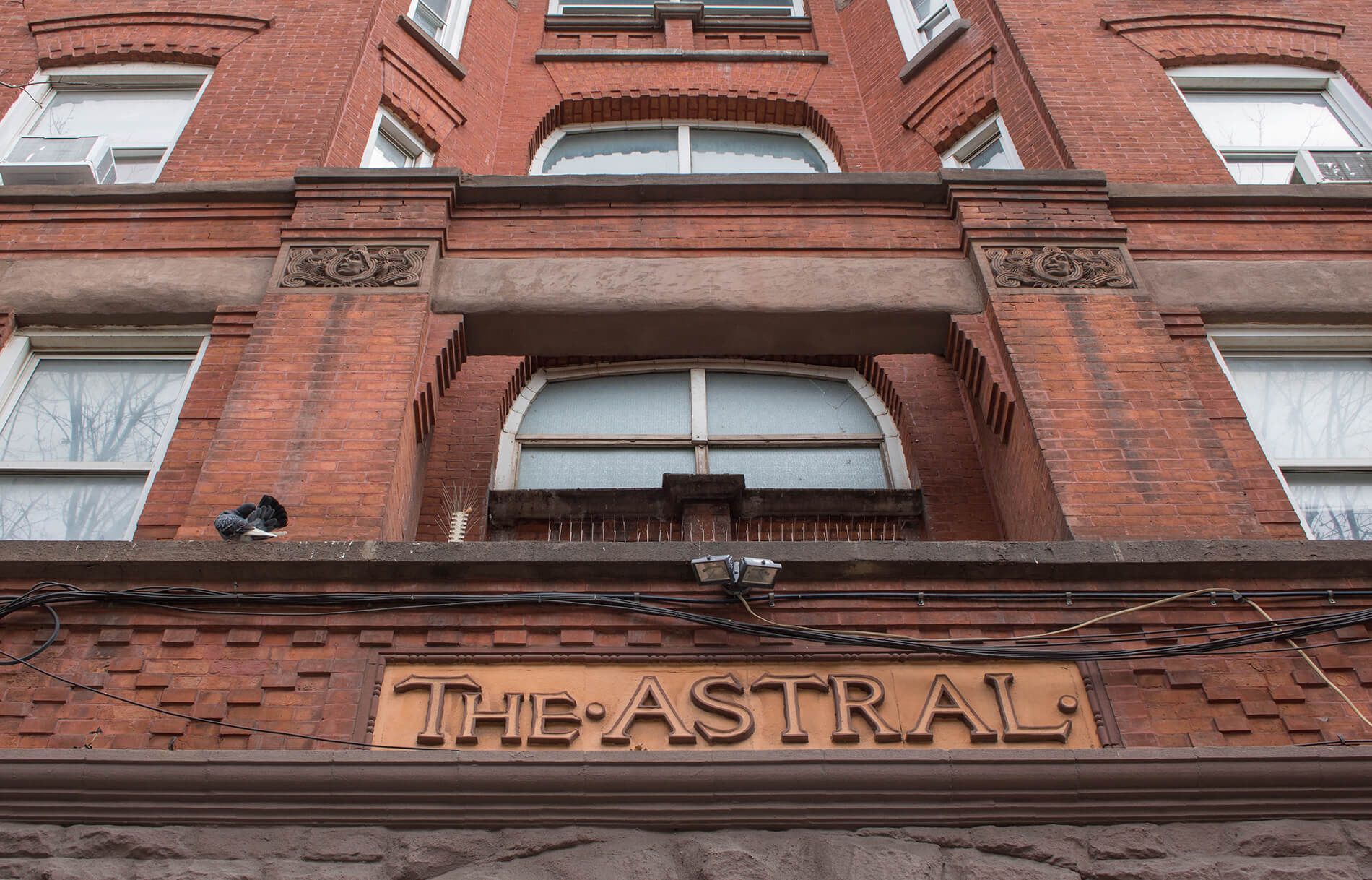
Pratt went into the oil business, investing in new wells discovered in Western Pennsylvania. With a partner named Rogers, he established a refinery in Greenpoint, on the banks of the East River and Newtown Creek. His new refinery was one of the first modern oil complexes of its day, and opened for business in 1867.
The refinery produced several petroleum products, but the most successful was a kerosene he called “Astral Oil.” This lamp oil burned cleaner, with less odor, and was less flammable. “Will not explode!” was one of their catch-phrases. It was marketed all over the world, with a campaign boasting that “the holy lamps of Tibet are primed with Astral Oil.”
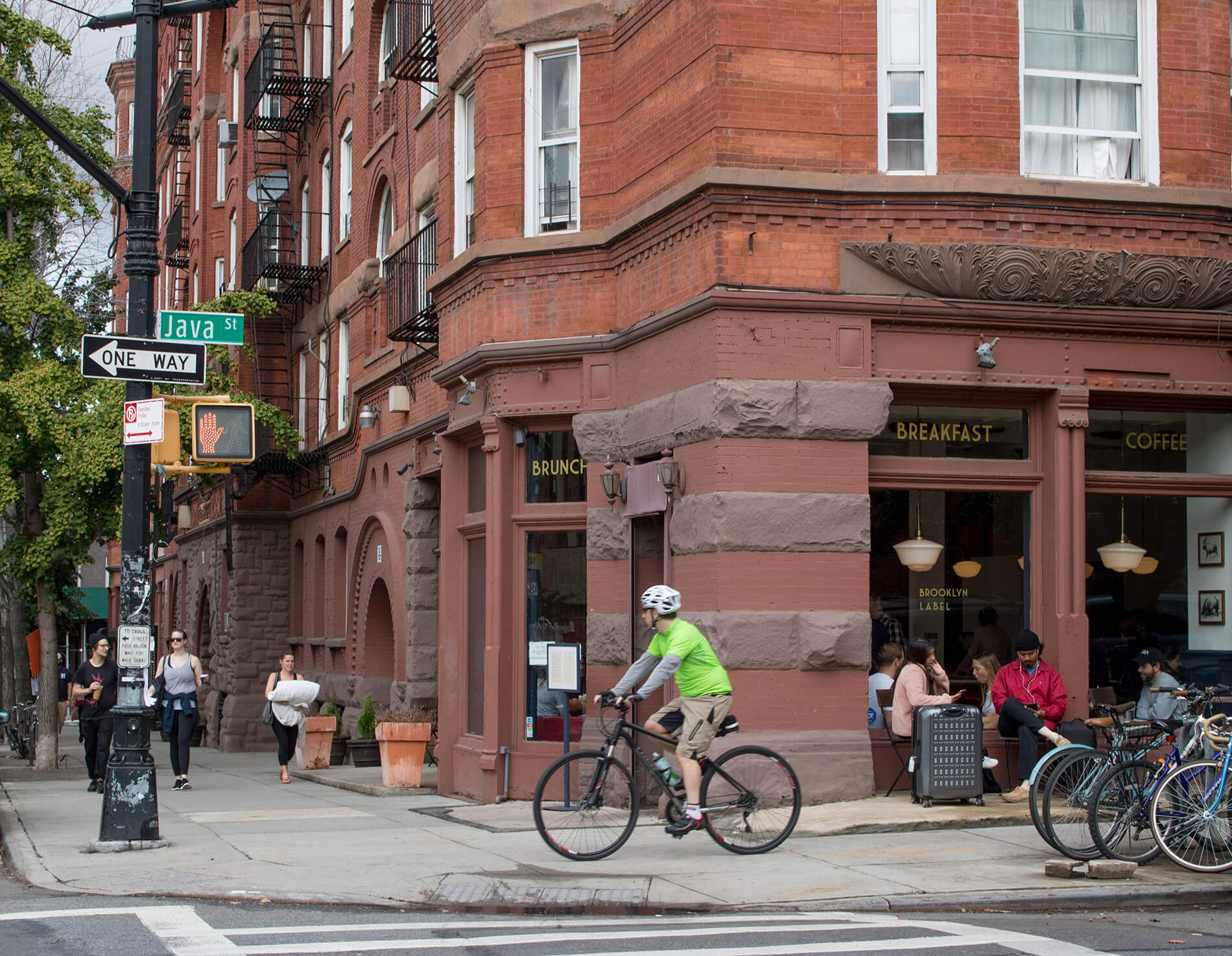
The refinery was so successful that Pratt caught the attention of John D. Rockefeller of Standard Oil. The men began as fierce business rivals, then decided they would both do better as partners. Astral Oil became a part of Standard Oil in 1875, giving Pratt and Rogers a huge payoff. Pratt got a partnership with Rockefeller, and a seat on Standard Oil’s board of directors. A year later, Charles Pratt was the richest man in Brooklyn.
Charles Pratt’s Largesse
Pratt celebrated by building a large mansion on Clinton Avenue, and later four mansions on the same street as wedding presents for his sons. All but one of the houses still stand. He also encouraged his Standard Oil friends to build in Clinton Hill as well, making it Brooklyn’s premiere neighborhood.
Being incredibly wealthy allowed Pratt to indulge in something that was dear to his heart — philanthropy. He was a very devout Baptist, and his faith encouraged him to spread the wealth. He gave generously to build local Baptist churches, donated heavily to the Adelphi Academy in Clinton Hill and, most notably, started an industrial training school bearing his name. Pratt Institute was founded in 1887.

He also turned his attention to housing. Through Pratt Institute, he established the Morris Building Company, which built and sold speculative row houses, most of it what we would call today “affordable housing.” He also built housing for his Astral Oil workers in Greenpoint.
The huge building was named the “Astral Apartments” and remains one of Brooklyn’s most important and impressive answers to the housing needs of 19th century workers. It also represents a change in Victorian housing standards — all in all, a building ahead of its time.
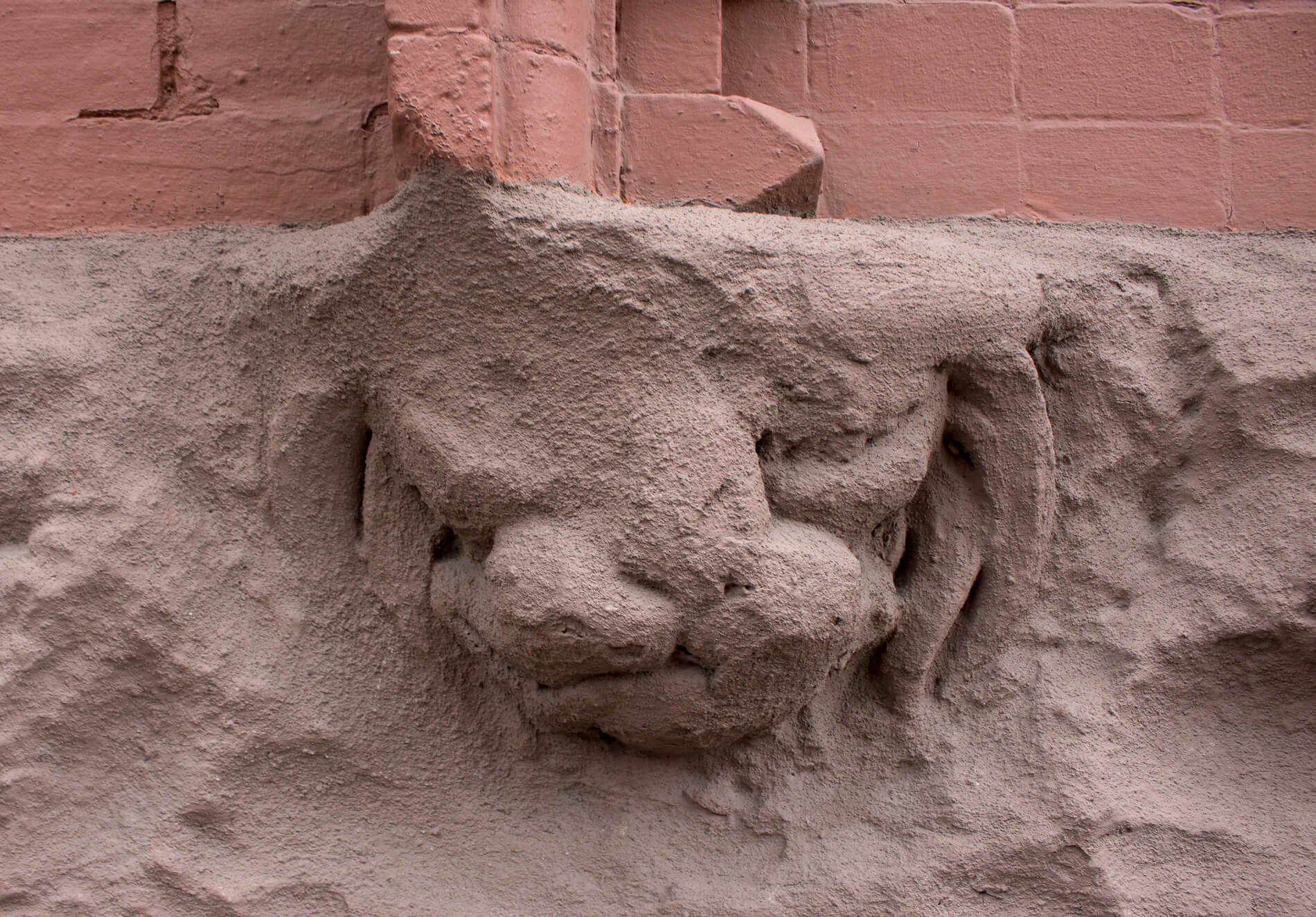
The Astral Model
Pratt believed that workers healthy in body and spirit made better workers. It was a novel idea in a period when most employers expected their workers to work twelve-hour days, six days a week, for low wages. Where or how they lived was no real concern to most. Pratt was one of an enlightened few.
Unlike most tenements of the day, Pratt’s building would have light, air, indoor plumbing and amenities. And it would be beautiful to boot. The philanthropist was very pleased with the buildings architects Hugh Lamb and Charles A. Rich designed for the Pratt campus. He commissioned them to design the Astral. Lamb & Rich did some research and based their building on innovative tenement housing built by English philanthropist George Peabody in London.
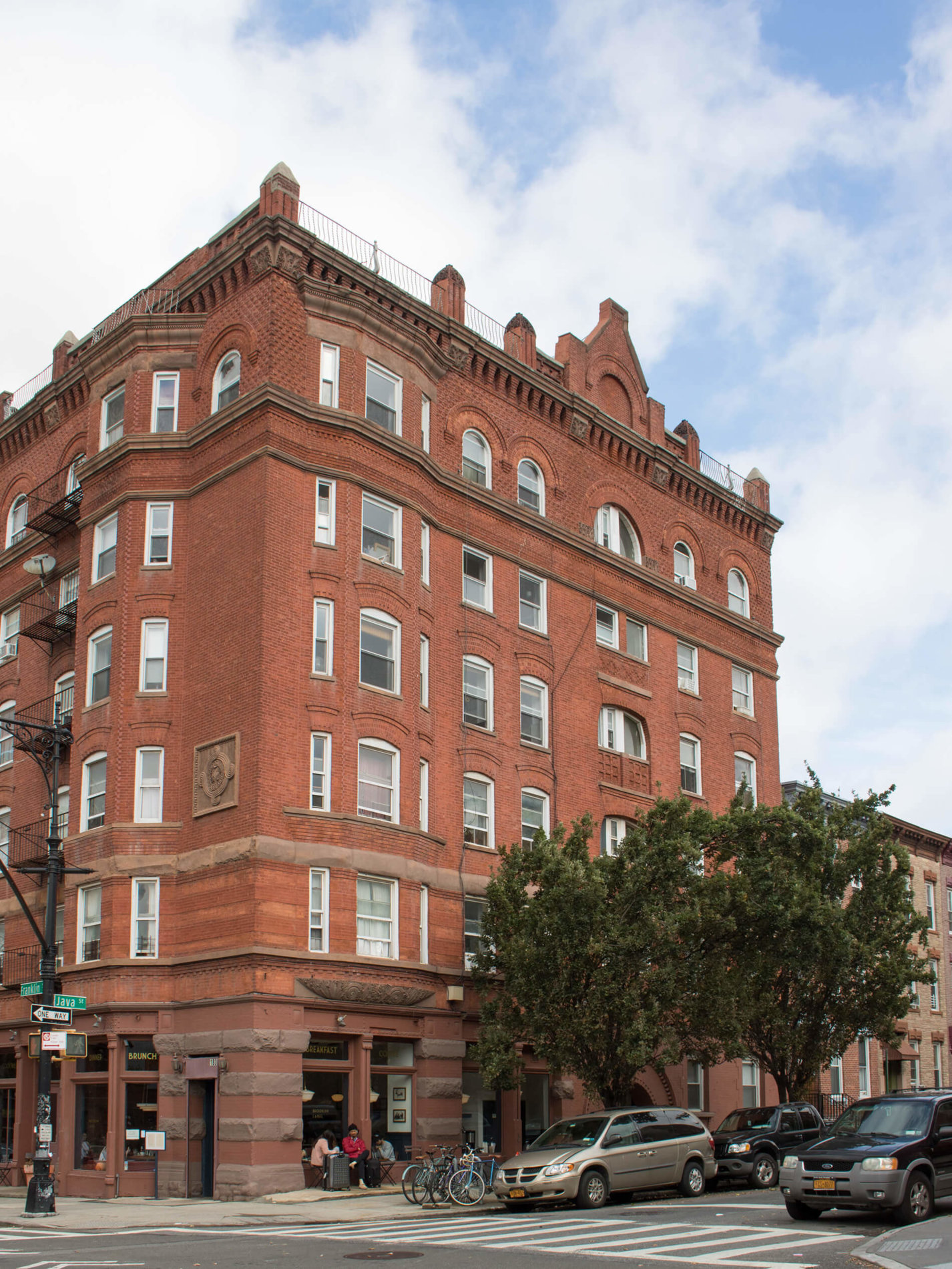
The Astral Apartments take up the entire block front of Franklin Street between India and Java Streets, with the building extending along both side streets, especially on India. It was built as a six-story walk-up, and originally had 108 apartments. The building curves around to enclose a large paved courtyard.
The architects designed a massive Romanesque Revival-style building with arched windows and entryways. The building is brick, with several kinds of stone, decorative shaped brick and terra cotta elements. The resulting building dances with recesses, bays, gables, decorative ornamentation and complex massing, making it a visual delight.
The walls of the front elevation are two feet thick, the sides only slightly less so, with interior safety innovations to make the building more fire resistant and safe. The Astral has six distinct sections, each with its own impressive entryway. These sections extend outward into the courtyard, enabling each apartment to have natural light and air, with an unprecedented one window per room.

The hallways were designed with windows for ventilation, also unprecedented. Other uncommon tenement-apartment amenities included hot and cold running water, a stove, and a separate toilet room in each apartment. Bathing was available in large marble-partitioned bathing rooms located in the basement — a major tenement luxury for its day.
Originally, the Astral comprised three-, four- and five-room apartments. (Later, two- and six-room apartments were added.) The larger apartments contained marble fireplaces. All the apartments had wood wainscoting in the hallways and living room, wood-trimmed doorways and rooms, gas lighting, and a coal box. In every apartment was a fold-down kitchen table attached to a wall as well as a dumbwaiter.
Reading and Cooperative Business Skills
The Astral also had some special amenities that dovetailed with Charles Pratt’s desire for social improvement.
A reading room and lecture hall space was originally located in the basement. A large fireplace stood on one wall engraved with the inscription “Waste neither time nor money.” That fireplace still exists in what is now the building’s boiler room.
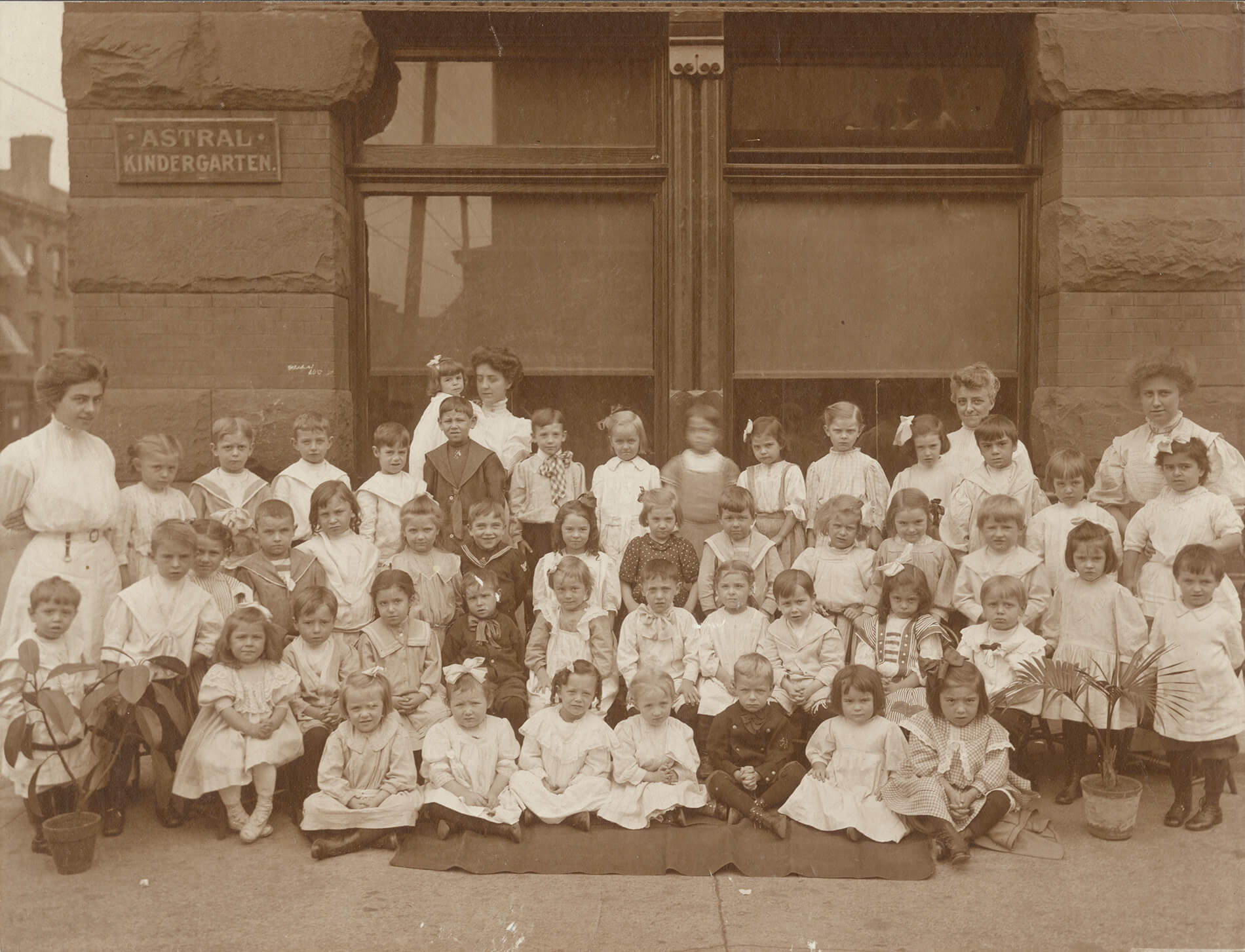
The ground floor of the Astral was given over to storefronts. In the 1890s, the basement library opened in the India Street storefront. Originally only for the tenants, the library eventually became a branch of the Brooklyn Public Library system. The library space is today a laundromat.
In 1894, the Astral Kindergarten opened for business in the storefront that is today a restaurant. It too was open to tenants first, then other children. Remaining storefront spaces were developed as cooperative shares, run by and for the tenants.
When the building opened in 1887 rents ranged from $12 to $30 a month, with the rents calculated to be approximately 15 percent of a tenant’s income. Although built for Astral Oil’s employees, ten years later, many of the apartments were rented by other tenants, including a lot of clerks and people employed by other important Greenpoint industries such as glassworks, shipbuilding and silversmithing.
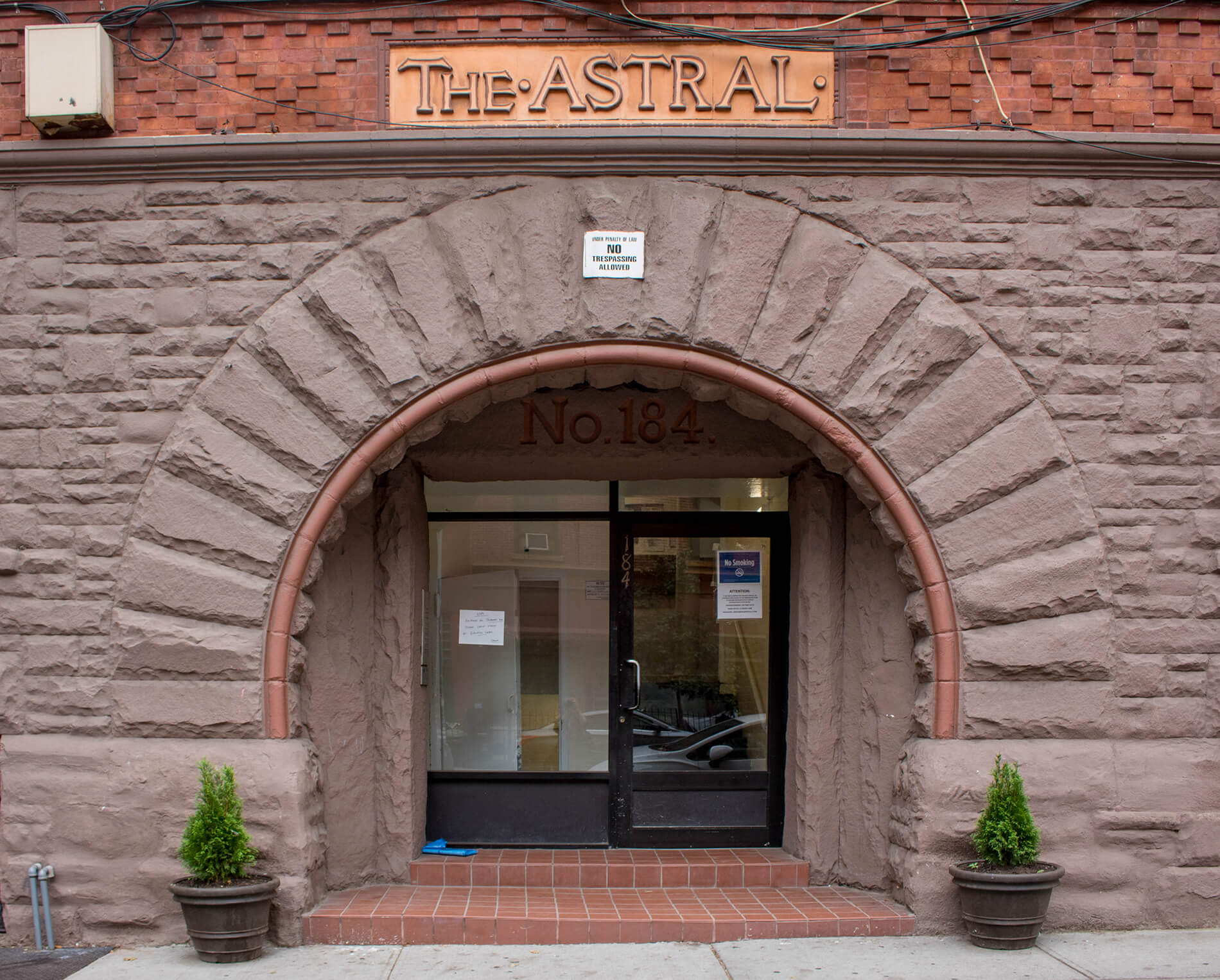
The Astral Apartment’s Legacy
Fellow Brooklyn philanthropist Alfred T. White built his Tower and Home Apartments in Cobble Hill in 1879, followed by his Riverside Apartments in 1890. White and Pratt were pioneers in superior affordable worker’s housing, but few others followed their lead. It would take legislation enacted in the early 20th century to force landlords and builders to install toilets and hot and cold running water in tenement apartments, and enact changes that would require air and light in every apartment.
The Astral entered the 21st century as a rent-stabilized building in a neighborhood and borough where rents continue to rise. The Astral was listed on the National Register of Historic Places in 1982 and became a New York City landmark in 1983. It is still a six-floor walk-up, and today has 118 units. The Astral remains a Greenpoint landmark, and one of Brooklyn’s great buildings.
[Photos by Susan De Vries unless noted otherwise]
Editor’s note: A version of this story appeared in the Fall/Holiday 2017/18 issue of Brownstoner magazine.
Related Stories
- Building of the Day: 232 Clinton Avenue
- A Fortress for Horses on Vanderbilt Avenue
- A Distinctive Park Slope Mansion Becomes a Hot-Sheet Hotel, Then Condos
Email tips@brownstoner.com with further comments, questions or tips. Follow Brownstoner on Twitter and Instagram, and like us on Facebook.





What's Your Take? Leave a Comment